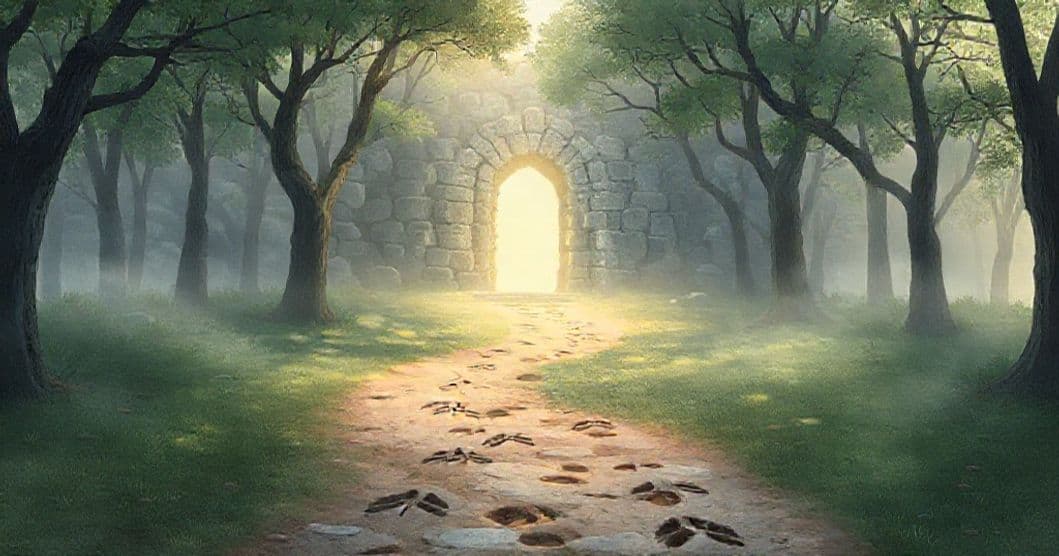Core Symbols: Footprints and Chambers as Journey Markers
Hawk footprints in dreams serve as both literal and metaphorical signposts, marking paths less traveled yet deeply meaningful. In dream imagery, footprints often represent the residue of past choices, but hawk footprints carry additional weight: hawks are birds of vision, so their tracks suggest a journey guided by intuition rather than logic. These footprints rarely appear randomly; they typically lead toward a distinct destination—a hawk chamber. In mythology, chambers symbolize hidden knowledge or transformative spaces, from ancient temples to the recesses of the mind. When a hawk chamber appears, it’s not just a physical location but a threshold between the conscious and subconscious, where deeper truths reside.
The hawk itself embodies keen observation and spiritual elevation. Unlike ground-dwelling animals, hawks soar, granting them perspective others lack. In your dream, following these tracks isn’t passive; it requires active engagement, as if your subconscious is inviting you to step into a role of explorer. This dynamic mirrors real-life moments where you must trust your instincts over external validation. The tension between the vulnerability of following unknown paths and the empowerment of being guided by a symbol like the hawk creates the emotional core of these dreams—uncertainty softened by the promise of insight.
Psychology Lens: Jungian Paths and REM Realities
Want a More Personalized Interpretation?
Get your own AI-powered dream analysis tailored specifically to your dream
🔮Try Dream Analysis FreeFrom a Jungian perspective, hawk footprints into chambers reflect the process of individuation—the journey toward wholeness. Jung viewed dreams as messengers from the collective unconscious, and hawks often appear as totems of the 'wise observer' archetype. The act of following these tracks could represent integrating fragmented aspects of yourself, with the chamber symbolizing the 'shadow' or repressed parts of your psyche waiting to be acknowledged. Unlike Freud’s focus on repressed desires, Jung emphasized dreams as guides toward self-realization, making hawk chambers potential spaces where you confront unintegrated parts of your identity.
Neuroscience adds another layer: during REM sleep, the brain processes emotional memories and creative problem-solving. Hawk dreams often peak during periods of high emotional processing, such as career shifts or relationship changes. The 'chamber' might correspond to the brain’s default mode network, where self-reflection occurs. Your subconscious, in this state, is essentially running a simulation—testing how you’d respond to navigating new territories. The hawk’s presence, then, isn’t just symbolic but a reflection of your brain’s attempt to make sense of uncertainty through ancient, evolutionary patterns.
Life Triggers: When the Subconscious Calls You to Explore
These dreams rarely arise in isolation; they’re often triggered by specific life events that demand deeper self-exploration. Career transitions, for example—leaving a familiar role for an uncertain new path—can activate hawk symbolism. The footprints here represent the tentative steps you’re taking, while the chamber is the new identity or skill set you’re 'building' internally. Similarly, relational shifts, like ending a long-term partnership, may prompt these dreams as your psyche processes the loss and rebuilds a sense of self.
Cultural context also matters: in Mayan cosmology, hawks were sacred guides to the underworld, representing the journey between life and death. In Native American traditions, hawks symbolize clear vision and spiritual protection. If you’ve recently engaged with these cultural themes, your subconscious might echo them. Even subtle triggers—like a documentary on falconry, a hike in a new area, or a conversation about 'soaring to new heights'—can plant seeds that bloom into hawk dreams. The key is recognizing these as invitations to explore areas of your life where you’ve been avoiding deeper questions.
What To Do Next: From Dream to Daily Action
Start with short-term reflection: Ask yourself where in your life you’re 'following footprints'—paths that feel guided but uncertain. Journal the emotions triggered by the dream: Was it excitement, fear, or a mix? Emotions here are clues to unprocessed feelings. Notice if you’ve recently ignored intuition in favor of logic; hawk dreams often surface when your gut has been trying to tell you something.
For medium-term experimentation, create a 'hawk chamber' in your daily routine—a physical or mental space dedicated to reflection. This could be a journal entry ritual, a walk in nature, or even a meditation practice. Notice if the hawk imagery connects to specific questions: Are you avoiding a difficult conversation? Is there a goal you’re 'chambering' (delaying) out of fear? Use the dream’s invitation to test small risks, like sharing an idea or taking a new route to work, to see how your intuition responds.
Long-term integration requires recognizing that hawk dreams aren’t one-time messages but ongoing guides. As you navigate life’s transitions, revisit the dream’s imagery: Do new footprints appear? Are the chambers evolving? This ongoing dialogue with your subconscious helps you build resilience, turning uncertainty into a source of strength. Remember: the journey matters more than the destination—the hawk’s path is as much about the flight as the landing.
FAQ
Q: What if the hawk chambers feel threatening in the dream?
A: Threatening chambers often reflect fear of confronting vulnerability or unknown aspects of yourself. Instead of fleeing, ask: What part of me is 'hiding' in that space? This is your subconscious signaling growth opportunities.
Q: Are hawk dreams always positive?
A: No—they can also highlight avoidance. If the dream feels forced, it may mean you’re ignoring intuitive guidance in waking life. The tension between exhilaration and unease is where the message lies.
Q: How do I know if the hawk is a personal symbol or collective archetype?
A: Personal symbols feel uniquely tied to your experiences (e.g., a childhood memory of a hawk). Collective ones resonate universally. Notice if the dream connects to your current life stage for clarity.
